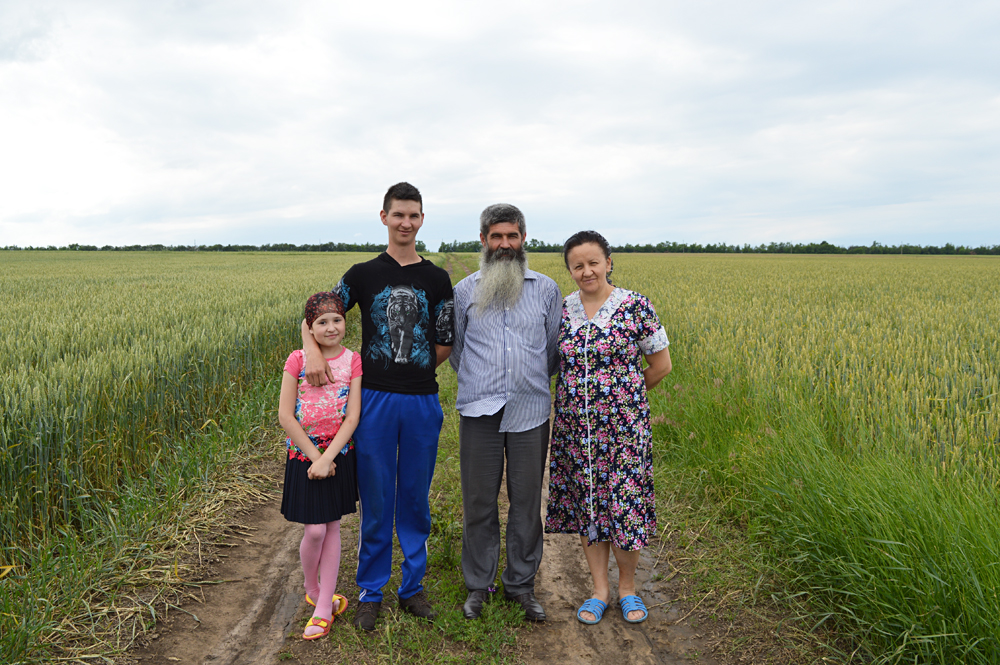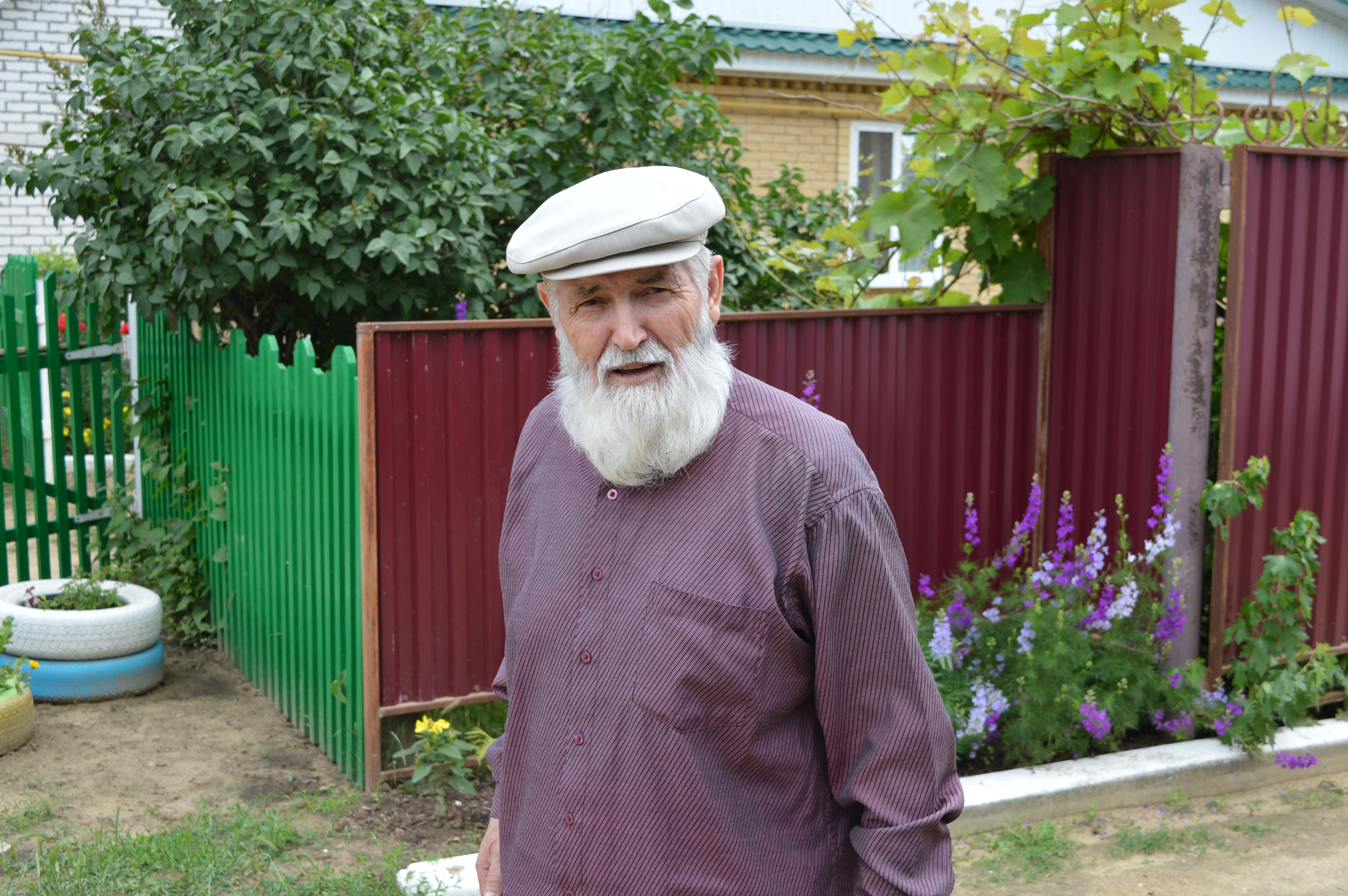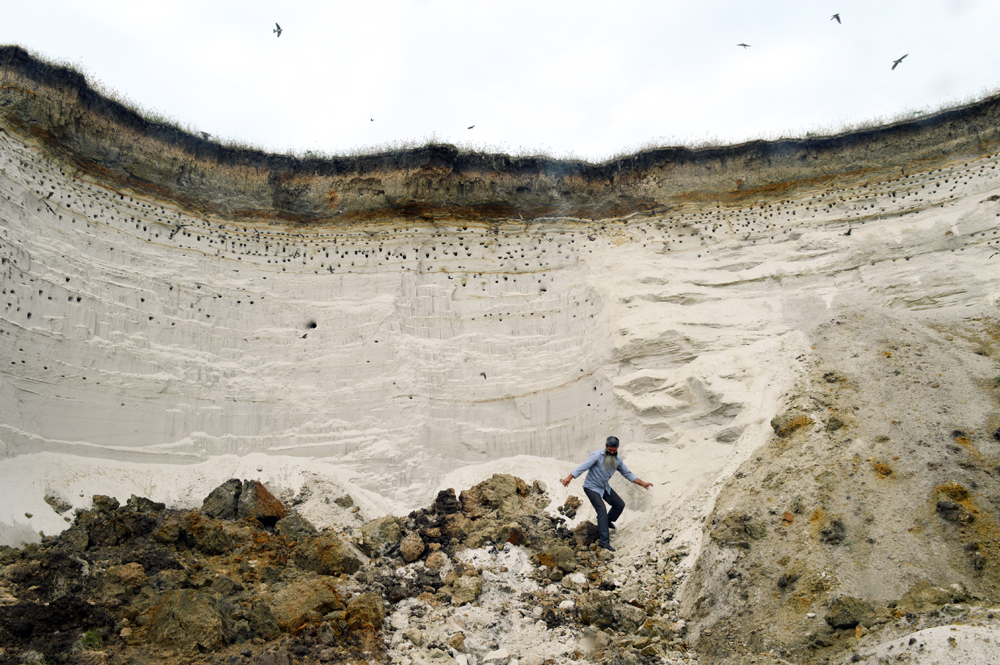
The Konovalovs, a family of Molokans, stand among their fields. Their ancestors fled from Turkey to Russia in the middle of the last century.
Yekaterina Filippovich The Konovalovs, a family of Molokans, stand among their fields. Their ancestors fled from Turkey to Russia in the middle of the last century. Source: Yekaterina Filippovich
The Konovalovs, a family of Molokans, stand among their fields. Their ancestors fled from Turkey to Russia in the middle of the last century. Source: Yekaterina Filippovich
Molokans, a branch of Orthodox Christianity and a special Russian ethnic group, appeared in Russia in the late 18th century and were considered by the official church to be a heretical sect, close in spirit to Protestants.
They differ from traditional Orthodox believers in that they regard the Bible as the sole basis to be followed by a believer. Molokans associate the Bible with "spiritual milk," which feeds the human soul. According to Molokans, they got their name (moloko is the Russian for milk) for that very reason.
However, there is another theory. Allegedly, this is what they were called by ordinary Orthodox believers for not observing fasts and continuing to consume milk and other proteins at that time (they completely give up eating only during the Passion of Christ).
In addition, they have their own interpretation of the Trinity and Christ, do not recognize saints and icons, have no clergy and sacraments, and consider any congregation believers to be church.
Today, Molokans can be found in the United States, Mexico, Georgia, Armenia and Azerbaijan. In the middle of the last century, several thousand Molokans moved to Russia from Turkey and settled in the villages of the Stavropol Territory (930 miles south of Moscow).
It’s not easy to find a Molokan village – if you don’t know exactly where it is. These people are used to living in seclusion far away from civilization and prying eyes. They have a few scattered villages in the eastern part of the region. One of them is near the village of Kamennaya Balka, or “Stone Beam.” To get there, you have to take a bumpy road and count the turns.
At the crossroads, we are met by Andrei Konovalov, the father of a large family. He drives along an obscure track and finally, the roofs of neat houses rise from behind a hill. Almost each has a gingerbread facade and front gardens with lush rose bushes.

The small houses are surrounded with fences with drawings from cartoons (suddenly, there's Disney's Snow White and the Seven Dwarfs). All of them are located on the same street, stretching out like an arrow. At its far end it disappears into the fields of standing winter wheat.
The Konovalov family owns 101 hectares of fertile land. Andrei is engaged in farming and growing crops.

Molokans traditionally lived in the Caucasus, in the Kars region, which was annexed from the Ottoman Empire by Russia under Alexander II. Under Lenin, the territory was returned to Turkey, so all Molokans spoke two languages, Russian and Turkish.
"Molokans believe that the coming of Christ will occur precisely on Mount Ararat, so they sought to stay on Turkish soil, to be closer to the mountain," says Pavel Konovalov, Andrei's father. "However, in Turkey, we didn’t feel safe: Our land could have been taken away, our daughters could have been stolen."
In 1962, the Soviet government invited the Molokans to come back to the Soviet Union. At that time, Pavel's family also received an offer to go to America, where there is a Molokan diaspora, but his family refused and chose to return to the USSR. However, life was initially far from easy.
"We were promised freedom of belief. So we believed it," Pavel recalls. "As soon as we moved to the Soviet Union, we had to live in earthen huts. There was nothing. We have built the entire village ourselves."
In total around 3,000 Molokans moved from Turkey to Russia
 Andrei goes to fetch some sand from the nearest quarry. Source: Yekaterina Filippovich
Andrei goes to fetch some sand from the nearest quarry. Source: Yekaterina Filippovich
The floor in Andrei's house is covered with a colorful rug with a pattern of sunflowers. There is absolutely no black in the interior – Molokans like bright colors and especially white as a symbol of purity. On Sundays, they dress in light clothes, and then hide them in the trunk – until next weekend. White, light ... milk?
"Molokans – this doesn’t come from the word 'milk'," says Pakhom, the host's great-uncle. "In the Bible, there is a metaphor of pure verbal spiritual milk. Our name comes from this. We stem from a single root. The persecutions in tsarist Russia taught us to keep together."
He frowns his bushy eyebrows and tells his story – his daughter left the community for good; she did not want to marry a Molokan.
An important rule of life is that you either marry someone of your own, so as not to mix the blood, or you do not belong here. To avoid marriages between distant relatives, grooms for Stavropol Molokan women are invited from Azerbaijan and Georgia.
For example, Andrei's wife Olga came to him from Armenia.
Molokans are great tea lovers. "We begin and end every meal with tea," says Andrei. "We only buy salt and sugar in the store. We make everything else ourselves."
The matriarch of the Konovalov family serves the lunch. Prominent on the table is a large yellow-sided samovar with a long spout. On each side there are benches, not chairs – this is a custom among large families. Olga slices homemade cheese, which she has prepared the day before.
After a hearty lunch, Andrei strokes his long beard with satisfaction. "According to our laws, the head of the family must have a beard," he says. "When we go from the village to the city, people sometimes point at us with a finger. We are not a frequent sight in towns. But people from the community know how to find us."
All rights reserved by Rossiyskaya Gazeta.
Subscribe
to our newsletter!
Get the week's best stories straight to your inbox